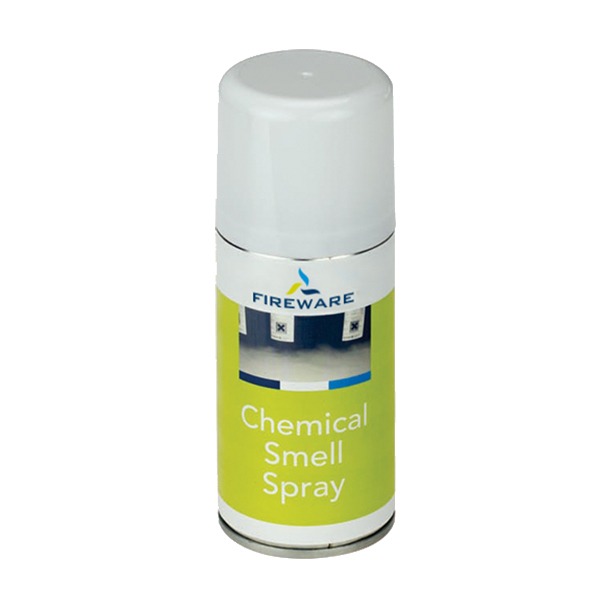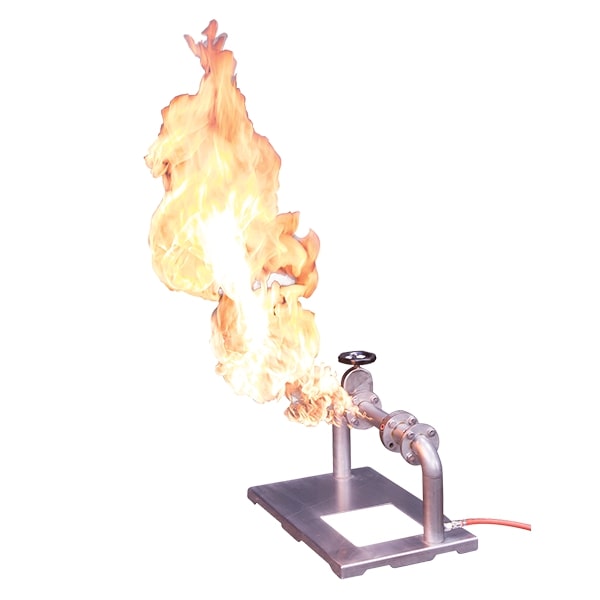Setting up a realistic and effective scenario for a hazardous materials training can be challenging. We’ll show you how to create a powerful and educational exercise using a CBRNe scenario.
A good training stimulates both body and mind
In a realistic scenario, the senses are triggered, and the body experiences the situation as “real” — even though the mind knows it’s just a training. This can cause stress responses, releasing adrenaline and endorphins. By simulating in this way, we approach the feeling of a real incident. This is how we optimally prepare responders for the moment when it truly matters.
But how do you create a realistic scenario? Most people immediately think of what something looks like — realistic flames, for instance. That’s certainly important, but it’s not enough. The entire picture has to make sense, so your brain starts to believe it.
Make sure there’s a believable story, not an over-the-top scenario. Engage as many senses as possible. Don’t just think about visuals, but also sound — and if possible, scent. Include the possibility of escalation: this creates a sense of urgency. And choose a realistic location — preferably not the training ground behind the station.
Pay attention to details in the surroundings: no visible training props, cables neatly tucked away, no unauthorized people present, no fire service vehicles in plain sight. Use tools the way they would be used in real life: let the pager go off, work with handwritten notes, and make sure the dispatch message is clear and unambiguous.
If you pay attention to these kinds of details, your training will become truly realistic.
Tools
There are countless staging tools available, but the most important one is still your own ingenuity. Don’t underestimate the impact of a well-crafted scenario: it doesn’t have to be big or spectacular, but it does need to be thoughtfully designed. Make sure you have a clear plan aligned with the training objectives. From there, it’s up to you to bring it to life.
You don’t need to be a chemist to create a convincing setup. Everyday household items can go a long way. Take baking soda and vinegar — straight from the supermarket. Mix them together and you get a fizzy CO₂ effect. Add some color fluid and you’ve got a realistic ‘leak.’ For a larger-scale version, try using dry ice to create thick, white vapor heavier than air — ideal for visualizing contaminated air or chemical mist.
Important: your training environment must always be safe. You need to stay in control of what’s happening. If things could spiral out of control, it’s not a safe exercise. Always assess the risks carefully, especially when working with chemical reactions.
So how does that work during CBRNe exercises?
CBRNe exercises are often more static in nature. The risk is that participants end up standing around, waiting for procedures. While that may reflect real-life situations, these are exactly the moments when the “game” breaks — and participants become aware that it’s just a training. Adrenaline fades, endorphins drop, focus is lost, realism disappears. And with it, the learning impact decreases.
To prevent this, it’s smart to structure your scenario in a way that keeps people engaged. For instance, extract a casualty from the contaminated area early on — that gives the second team immediate tasks. But you can also keep people engaged without immediate action. Make sure the staging is visible from the staging line, and make it look convincing. A leaking barrel is one thing — but a barrel bubbling over with foamy, filthy liquid grabs the whole team's attention. And it immediately adds a sense of urgency to the situation.
Substance identified?
In a CBRNe exercise, one of the first reconnaissance questions is often: “What substance is involved?” Sometimes this becomes clear during the exercise, other times it remains unknown — and that makes a fundamental difference in the scenario.
To answer that reconnaissance question, there are several useful tools available:
CBRNe training kit
This complete CBRNe training kit includes, among other things, colorants, colored smoke cartridges, and scent chemicals. These elements make your scenario dynamic, realistic, and visually appealing. The kit also contains magnetic boards for transport vehicles and bulk packaging. For example, it includes a magnetic Kemler board, suitable for trucks and vans. With interchangeable digits, you can quickly create the GEVI and UN number that will be recognizable to the exercise team.
Additionally, GHS and ADR labels, as well as the NFPA hazard diamond, are included. All magnetic elements can be easily attached to metal surfaces, allowing for quick and flexible adjustments in your scenario setup.
What's extra convenient: all components from this kit are also available separately. This allows you to easily create your own training kit or supplement it where needed.
Escalation
An opportunity for escalation adds tension and urgency to an exercise. It creates a threat that demands action: the incident must be stabilized before it escalates. An escalation moment can also serve as a turning point where plans need to be revised or the operation takes a different direction.
Sometimes, a scenario even starts with an escalation, such as an explosion upon arrival. This immediate threat sharpens the team's focus right away. The sense of time pressure and uncertainty increases participant engagement — exactly what you need for a realistic and valuable training exercise.
There are various tools available for simulating escalations that combine safety with a convincing effect:
Explosion simulator
With this explosion simulator, you can safely simulate an explosion. The sound and the noticeable air pressure provide an impressive experience. Ideal for starting an incident with a bang or marking a turning point in the scenario, where the operation suddenly changes.
View the Explosion Simulator here.
FireWare Stand-Alone Flange Fire
or Add-on Flange Fire in combination with the Vesta Fire Extinguisher Trainer
For simulating fire as a result of a leakage, this combination is particularly suitable. The Stand-alone Flange Fire simulates a leakage in a (gas) pipeline that has ignited. This can be a great escalation in a scenario. In combination with the Vesta Fire Extinguisher Trainer, you can train realistically on the proper use of an extinguishing agent, under time pressure, and with a clear visual result.
View the Stand-alone Flange Fire. Or check out the Vesta Fire Extinguisher Trainer in combination with the Add-on Flange Fire
Simulating Evaporation with Light Smoke


Training smoke is available in different densities. The lightest variant is the Smoke Fluid Fire Drill — not only suitable for fire drill training, but also ideal for simulating the evaporation of a chemical substance. Think of a scenario where a leak spreads from a tank or tanker truck towards a ditch or dry canal. Lay a dense smoke hose or perforated smoke hose in the desired location, use the Smoke Fluid Fire Drill, and you'll create a mist that convincingly represents an evaporating substance.
Tip: Dilute the Smoke Fluid Fire Drill with a little demineralized water to make it even more realistic, resembling a vapor.
Also check our service portal for videos that demonstrate the difference between our smoke fluids and smoke machines.
Scent
As mentioned earlier, a realistic scenario stimulates as many senses as possible — and smell is often a forgotten but highly powerful element. So don't forget to add smell to your exercise.
For this, there is the FireWare Chemical Smell Spray: a handy spray can with an extremely unpleasant odor that immediately triggers a reaction. Ideal for making a chemical threat more believable.
But here too, you can be creative. A drug lab with a typical anise or almond smell? You can easily simulate that with a little sambuca or amaretto in a plant sprayer. The effect is immediate and recognizable, without posing any danger.
In short: think about what you want to evoke, and be creative in how you shape it. With smell, you literally bring the exercise to life.


In conclusion
A good CBRNe exercise doesn't have to be big or spectacular, but it should be well thought out, engaging, and credible. By making smart use of simulation tools and your own creativity, you can build scenarios that truly resonate with the participants. Think in terms of learning objectives, be careful with your setup, and don't forget the power of details: scent, sound, movement, threat.
Ultimately, it's about preparing people for situations where it’s really happening. And the better the exercise, the better the response will be when it matters.
If you have questions or would like us to support you with CBRNe exercises, feel free to contact us!











